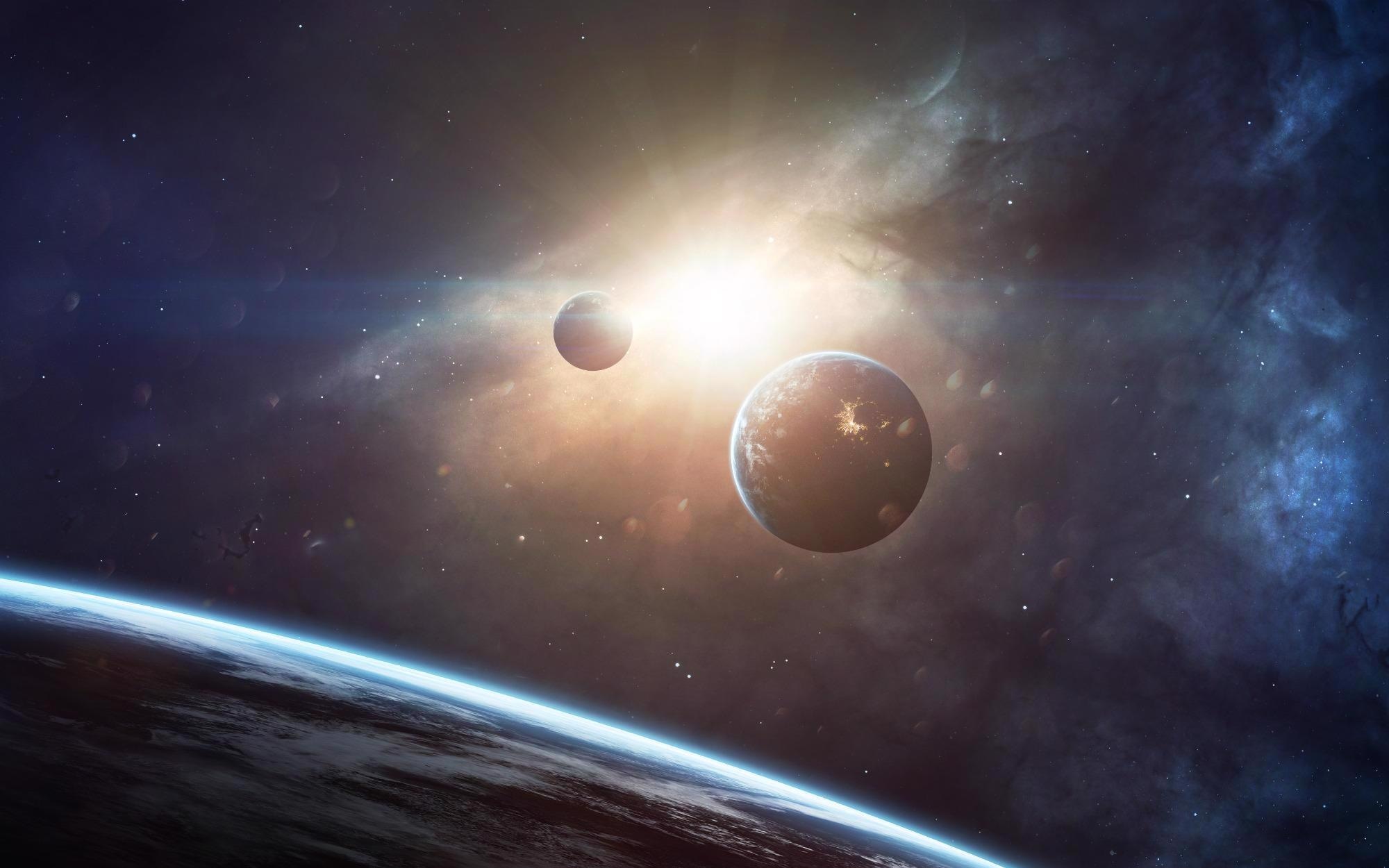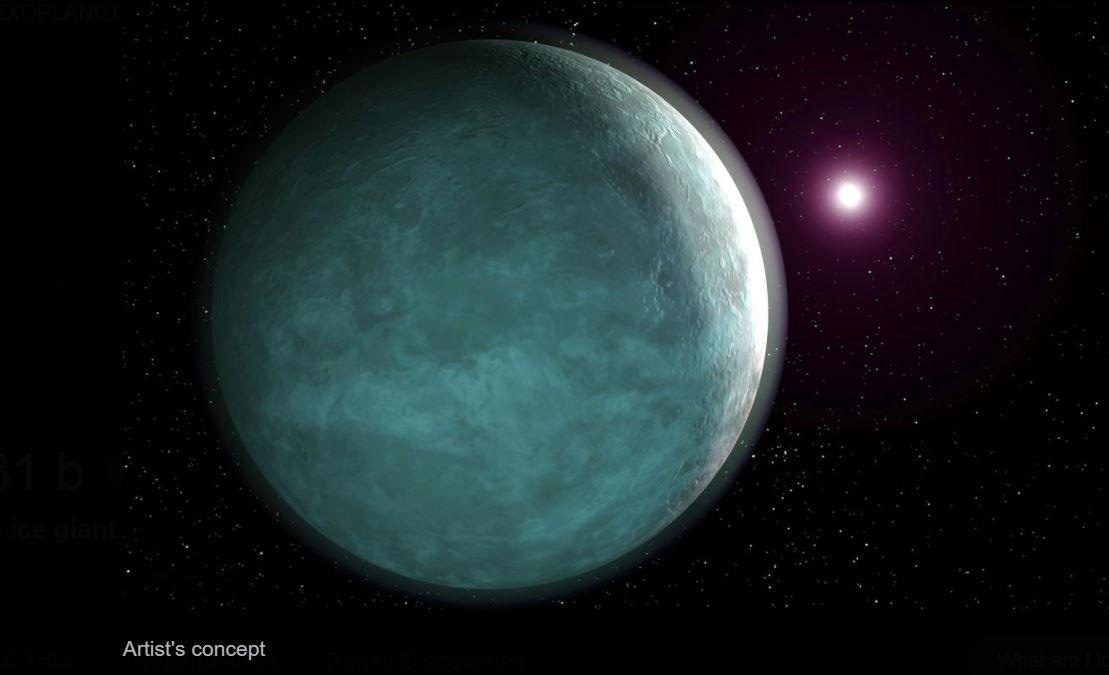AZoQuantum speaks with Jennifer Burt, Jennifer is part of an international team of astronomers that have discovered an exoplanet, known as TOI-1231 b. The exoplanet is a roughly Neptune-sized planet that has been determined as having a cool atmosphere, which completes an orbit of its parent star in just 24 days.
Can you explain your recent research and what you and your team discovered?
Our team recently confirmed a new exoplanet around a nearby, red dwarf star called TOI-1231. The planet was first discovered by NASA’s Transiting Exoplanet Survey Satellite (TESS) mission, which monitors the brightness of many thousands of stars each month. TESS observed that TOI-1231 b was getting just a little bit fainter every 24 days, which suggested that there was a planet orbiting the star and blocking some of the starlight from reaching the TESS cameras.
To prove that the signal was indeed caused by a planet, we then needed to detect the planet with a second telescope – otherwise, there’s a good chance that the signal could be due to spots on the star or a background noise source. To do this, we used the Planet Finder Spectrograph, which is located on the Magellan Clay telescope in Chile, to observe the star and spread its light out into a very fine rainbow called a spectrum. By taking many observations over months, we identified tiny shifts in the star’s spectrum that indicated a planet is orbiting around the star and pulling it back and forth via gravity.
Measuring the size of the brightness dips from TESS told us how big the planet is, measuring the size of the shifts in the spectrum told us how massive the planet is, and combining them let us compute its density which provides important clues about what the planet might be made of.

Image Credit: Shutterstock.com / Vadim Sadovski
What makes TOI-1231 b stand out from other recently discovered exoplanets?
What makes TOI-121 b particularly exciting from an atmospheric characterization point of view is its temperature. Of the 4400 exoplanets we’ve discovered so far, almost 80% of them have orbital periods shorter than Mercury’s 88 days - mainly because our current detection methods are more sensitive to planets that have very short orbital periods.
In addition, because those planets are very close to their stars, they tend to be quite hot compared to the solar system, the majority have temperatures in the many hundreds if not thousands of degrees. TOI-1231 b, however, is on a relatively long orbit – it takes a whole 24 days to go around its star! Combine that with the fact that the host star is much smaller and cooler than the Sun and we find that the planet should be somewhere around 140F. While that’s a bit too toasty to be considered a comfortable temperature here on Earth, it’s in the coolest few percent of transiting planets detected to date.
TOI-1231 b has been defined as a ‘sub-Neptune,’ can you explain what the qualities of this class of exoplanet are?
Sub-Neptunes are planets smaller than Neptune, which is about 4x larger than Earth. In our studies of exoplanet populations thus far, we’ve discovered thousands of planets between the size of Earth and Neptune. These planets fall into two groups, super-Earths and sub-Neptunes, with a valley in the middle (around 1.8 Earth radii) where very few planets seem to fall. Sub-Neptunes range from about 2-4 Earth radii, so TOI-1231 b is on the larger side of that population with a radius that’s 3.65 larger than Earth’s.
How common are sub-Neptunes in comparison to other exoplanet classes such as super-Earths or hot Jupiters?
Based on all of our studies of exoplanet populations and demographics so far, we’ve found that super-Earths and sub-Neptunes are the most common type of planet and occur around more than half of the stars in the Milky Way! This was a bit of a surprise because we don’t have any of these planets in our own Solar System. Planets like hot Jupiters are much rarer, occurring around less than 1% of stars.
Can you describe the qualities of TOI-1231 b?
TOI-1231 b is very similar in size and density to Neptune, so we expect it to have a large atmosphere that makes up a significant fraction of its radius, which is great for studying what that atmosphere is made of, using facilities like the Hubble Space Telescope. As mentioned above, the planet is much cooler than the majority of small, transiting planets discovered to date. In fact, it’s one of only a handful of small stars cooler than 200F, for which we can hope to characterize its atmosphere.

An artist's concept of the exoplanet TOI-1231 b. Image Credit: Exoplants.nasa.gov
What is it about this planet that makes it a prime candidate for follow-up investigations?
It’s a combination of features from both the star and planet. Based on its size and density, we have good reason to think that TOI-1231 b has a voluminous atmosphere that makes up a significant portion of its outer layers. When the planet passes in front of its star from our viewpoint here on Earth, light from the star will pass through the planet’s gases and certain wavelengths of that light will get absorbed by the atoms and molecules that make up the gas. This leaves a type of chemical fingerprint on the starlight that astronomers can use to determine what the atmosphere is made of. As TOI 1231 b has a voluminous atmosphere and because its host star is quite bright, those atmospheric signals should be very pronounced and easy to detect.
During the course of your study of TOI-1231 b, did anything come as a surprise to you and your colleagues?
Something that I didn’t notice at first was the overall motion of this star-planet system. When measuring the mass of the planet, I look for very small relative shifts in the star’s motion that are caused by the planet’s gravitational tug as it orbits around the star – something like if the star were sitting in space and using a hula hoop.
But, in addition to those relative shifts TOI 1231 is also just speeding its way across the galaxy and away from Earth, like a hula hooper running full tilt away from you. This motion produces a shift in the atmospheric signatures from the planet, which means that cool hydrogen atoms escaping from the planet’s atmosphere might be detectable. Normally, the presence of these atoms is hidden both by the outer layers of Earth’s atmosphere and by interstellar gas.
But the TOI-1231 star-planet system is moving so fast that the escaping hydrogen atoms are shifted out from underneath the blocking material and could therefore be detected by telescopes like Hubble. This wasn’t something I’d thought about when first detecting the planet, but fortunately, my friend and colleague Allison Youngblood had been looking for exactly this kind of system and got in touch to point out this extra, exciting bit of science that could result from our discovery!
How did you first become interested in the investigation of exoplanets?
As I was finishing up college in 2010 I started learning about exoplanet discovery methods in class and I was reading about some of the new planets that teams in California and Europe were discovering using ground-based telescopes. At the time, I was working on studying Saturn’s rings which was a really interesting (and beautiful!) area of science, but the idea of discovering whole new worlds just fully captured my imagination. So when I applied for graduate school, I specifically looked for programs that had faculty working on exoplanets science and prioritized those. I ended up at UC Santa Cruz, which has a great history of using ground-based telescopes to search for planets around bright, nearby stars and that’s what I’ve been doing ever since!
In terms of the most significant exoplanet discoveries, where does this finding rank?
It’s hard to say, in part because all of the atmospheric characterization studies that we’re excited about for the planet have yet to happen. The Hubble Space Telescope will be looking at TOI-1231 b this summer and that will give us our first hint about what the atmosphere looks like and whether it contains signs of water, a question that sprang up after another similarly cool planet called K2-18 b showed unexpected signs of water a few years ago. And other proposals are underway to get more telescope/satellite time to study other aspects of the planet’s atmosphere – so once those are in and the science has been done we’ll have a better sense of just where to put TOI-1231 b in the list.
What future developments or technology do you think will be adopted for the study of this exoplanet?
The next big advancement relevant to TOI-1231 b is the launch of the James Webb Space Telescope (JWST), which will provide unparalleled precision and resolution for studying the atmospheres of cool planets. The construction of the upcoming 20-30 meter class telescopes, like the Giant Magellan Telescope, will also offer a chance to study the planet’s atmosphere in more depth.
ESA’s CHaracterizing ExOPlanet Satellite (CHEOPS) is currently selecting exoplanet targets for the James Webb Space Telescope (JWST) to investigate further. Do you think TOI-1231 b will be amongst these worlds?
I certainly hope so! TOI-1231 b is a fantastic JWST target thanks to the size of the planet and how bright the star is in the wavelength bands that JWST uses. But the fact that the planet has an orbital period of 24 days means that we only get a chance to study its transits once a month at best. If we try to observe an upcoming transit from the ground, then first we need the transit to happen when it's night time at the telescope you have observing time on and second we need the weather to stay clear for the 4+ hours that the transit takes. Getting both of those requirements to happen at the same time is rare, so following up these long period planets from the ground can be very challenging.
As a space-based mission, CHEOPS gets to avoid many of those hassles, and could help us both to do some exciting science on the planet’s atmosphere and to double check that we know exactly when future transits should happen so that we don’t waste any time with JWST.
In your opinion, is this the golden age of exoplanet science?
It’s hard to know what the next decade or two will bring, but this is certainly an amazing time to be working on exoplanets! For the first time, the number of exciting exoplanet candidates that merit detailed characterization has eclipsed the follow up resources of existing facilities – so we have more new planets than we can easily follow up in a given year. This allows studies not just on individual planets but on different planet populations and the demographics of what kinds of planets are most common in the galaxy.
We can expect this surplus of new and interesting planets to continue for the next many years thanks to NASA’s TESS satellite and ESA’s upcoming PLATO mission, and our ground based resources for measuring the masses of these planets are making big strides forwards in precision, which means we’re able to study smaller and smaller planets. So I’m hard pressed to imagine a more exciting time to be doing this kind of work.
How could the investigation of exoplanets like TOI-1231 b one day help us answer the question of the existence of life elsewhere in the Universe?
Something we’re still trying to understand is how common planets like the Earth, and even further how common planetary systems like our own, are in the galaxy. Detecting an Earth analog – an earth-like planet orbiting around a Sun-like star on an orbit of roughly 1 year – is still beyond our capabilities, though we’re making active progress on that front. But of equal importance is understanding the ever-increasing population of short period, super-Earth/sub-Neptune planets (like TOI-1231 b) that we’re finding to be the most common type of planet in the Milky Way.
Our solar system doesn’t contain one of these planets, and so understanding why and what that means about how planets are formed elsewhere is crucial to figuring out how likely it is for planets like Earth to show up around other stars.
If you could tell the general public one thing about TOI-1231 b to capture their imaginations, what would that be?
TOI-1231 b is an exciting example of a new, small, temperate world where we can really delve into what the atmosphere is made of – and the big question is whether that atmosphere might contain water! Since it’s the same size as Neptune, this planet is too large to be considered habitable – but it’s an important stepping stone to refine our abilities to study atmospheres that may contain a variety of molecules. Planets like TOI-1231 b - transiting, sub-Neptune planets that also have precise mass measurements - aren’t all that much like the Earth, but they provide exciting opportunities to go far beyond just confirming their existence.
We can learn about their interior compositions, their atmospheres, and their likely formation and evolutionary history. They provide us with a fantastic chance to fully characterize each individual planet, and to get to know them on a level that just isn’t possible for planets where we can only measure their size or their mass, but not both.
Where can readers find more information?
The full paper describing our discovery is available here.
There’s also a NASA Discovery alert available here.
And a write up by the University of New Mexico, home to second author Diana Dragomir, is available here.
About Jennifer Burt
 Jennifer is a postdoctoral researcher at NASA’s Jet Propulsion Laboratory, specializing in the detection and characterization of exoplanets orbiting nearby stars. Jennifer received her Ph.D. in Astronomy & Astrophysics from UC Santa Cruz, and then spent three years at MIT as a Torres postdoctoral fellow working as part of the TESS team.
Jennifer is a postdoctoral researcher at NASA’s Jet Propulsion Laboratory, specializing in the detection and characterization of exoplanets orbiting nearby stars. Jennifer received her Ph.D. in Astronomy & Astrophysics from UC Santa Cruz, and then spent three years at MIT as a Torres postdoctoral fellow working as part of the TESS team.
Over the last two decades, we have learned that exoplanets (planets that orbit stars other than the Sun) are everywhere — dedicated searches have shown us that most stars in the Milky Way host at least one exoplanet on average. The planetary systems detected thus far, however, look almost nothing like our closest neighbors. The planets within them are mostly between the size of Earth and Neptune and have orbital periods less than 100 days, characteristics that we do not see in any of our solar system planets.
To better understand these alien worlds, astronomers are now carrying out targeted, multi-pronged observations of planets in systems where both photometry and Doppler spectroscopy can be applied. It is only in these systems, where both a precise mass and radius are measured, that we can determine the planet’s bulk density and likely interior composition, and correctly interpret atmospheric data taken via transmission spectroscopy or direct imaging.
Jennifer’s research sits at the center of this effort — Jennifer carries out precision radial velocity observations to detect and/or confirm new exoplanets, providing the precision mass measurements that make them compelling targets for future atmospheric study.
Interview questions provided by Robert Lea.
Disclaimer: The views expressed here are those of the interviewee and do not necessarily represent the views of AZoM.com Limited (T/A) AZoNetwork, the owner and operator of this website. This disclaimer forms part of the Terms and Conditions of use of this website.